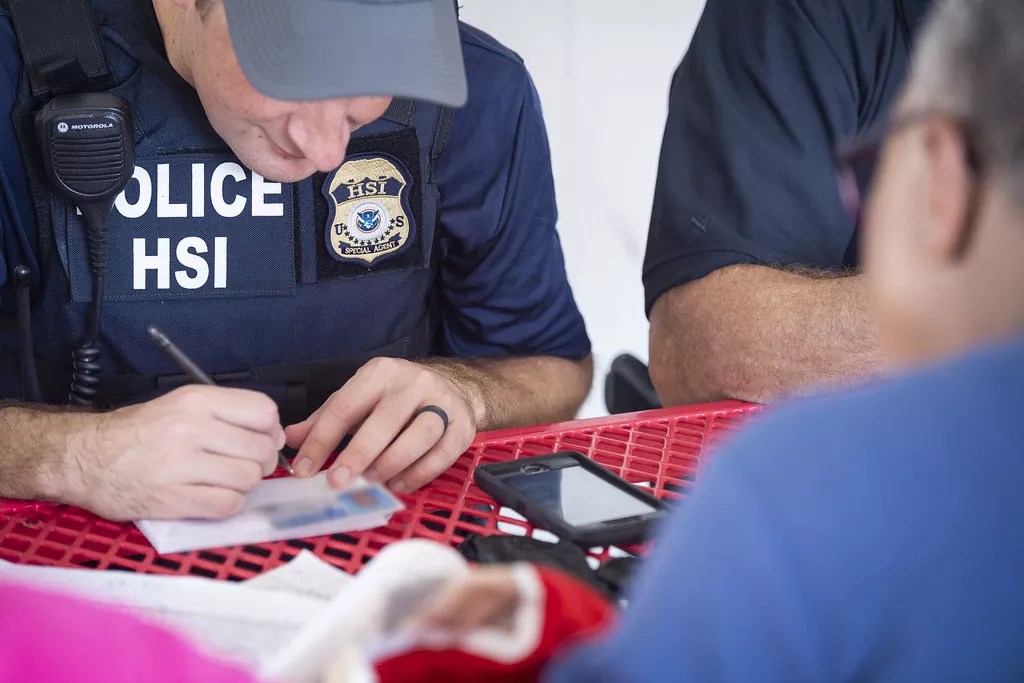
Photo by U.S. Immigration and Customs Enforcement via Flickr

Audio By Carbonatix
Asylum seekers in the Miami area face bleak odds of having their applications accepted, according to Mobile Pathways, a nonprofit focused on immigration transparency.
An “asylum navigator” page on the organization’s website reveals that the United States Department of Citizenship and Immigration Services (USCIS) has rejected 82 percent of the 12,000 asylum applicants in the Miami-Fort Lauderdale metropolitan area since January 2020. (The Berkeley, California-based nonprofit has collected asylum data since 2010, but New Times focused on data gleaned from 2020 onward.)
Refugees may seek asylum because of persecution or fear of persecution in their home country. Miami has the fourth-highest asylum application rejection rate among major cities.
According to the group, which partners with immigration offices nationwide to compile data, asylum seekers face higher rejection percentages only in Houston, Atlanta, and Charlotte, North Carolina.
This year, make your gift count –
Invest in local news that matters.
Our work is funded by readers like you who make voluntary gifts because they value our work and want to see it continue. Make a contribution today to help us reach our $30,000 goal!
- Houston: 90 percent of 17,000 applicants rejected
- Atlanta: 86 percent of 4,185 applicants rejected
- Charlotte: 86 percent of 3,246 applicants rejected
- Miami: 82 percent of 12,000 applicants rejected
- Los Angeles: 76 percent of 7,053 applicants rejected
- Orlando: 65 percent of 3,200 applicants rejected
- San Diego: 61 percent of 2,200 applicants rejected
- Philadelphia: 54 percent of 4,121 applicants rejected
- Boston: 51 percent of 11,000 applicants rejected
- New York City: 41 percent of 51,000 applicants rejected
- San Francisco: 28 percent of 24,000 applicants rejected
And while asylum applications in many cities have risen dramatically since President Donald Trump took office and began issuing deportation orders, applications in Miami have stayed relatively stable since a steep decline in 2020, according to Mobile Pathways’ data.
Mobile Pathways program director Ana Ortega-Villegas says the group uses its asylum navigation database to help future immigrants filter cases by nationality, court venue, and the city where they hope to start their new lives in the U.S.
“We went from a very messy dataset to a user-friendly dashboard,” Ortega-Villegas said in a press release on the company’s site. “Using the dashboard takes less than a minute. In that brief time, we divert people from their stressful situations and introduce technology that aids in future planning.”
According to the U.S. Department of Homeland Security (DHS), the number of people granted asylum increased from 35,720 in 2022 to 54,350 in 2023, the last year for which data is available. Tens of thousands of refugees seek asylum here yearly, fearing persecution over race, religion, nationality, politics, and more. However, U.S. Immigration and Customs Enforcement (ICE) orders thousands of those who make it to the U.S. to be removed each year, including about 8,300 in the Miami area since 2019, according to Mobile Pathways.
People physically present in the U.S. are permitted to seek asylum by filling out USCIS Form I-589 within one year of arrival.